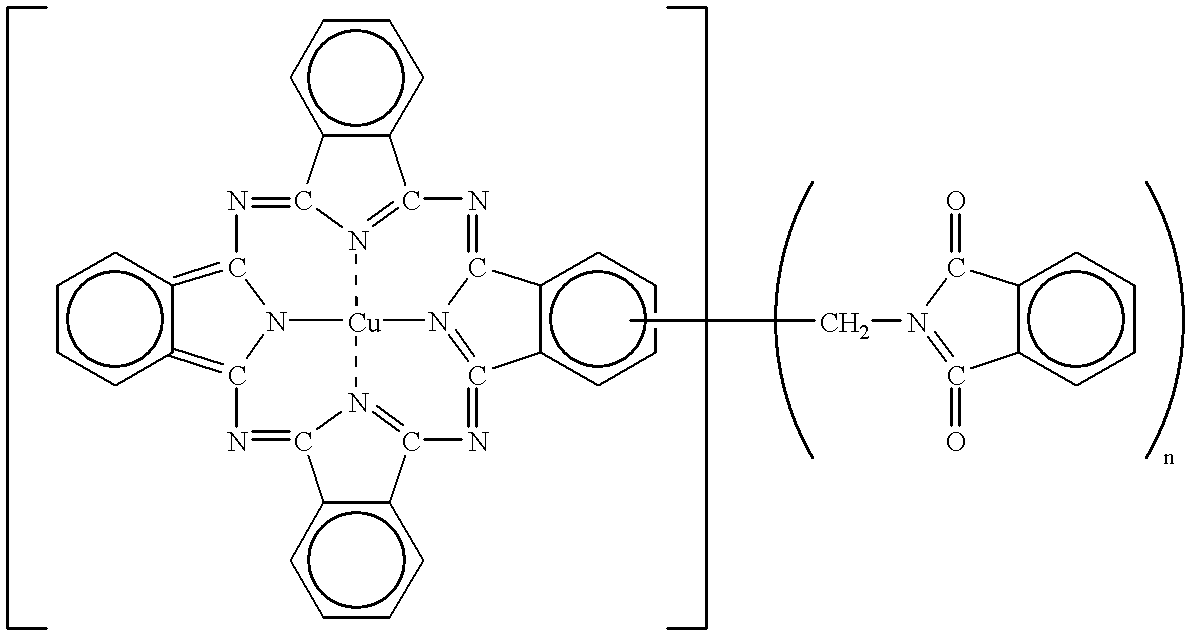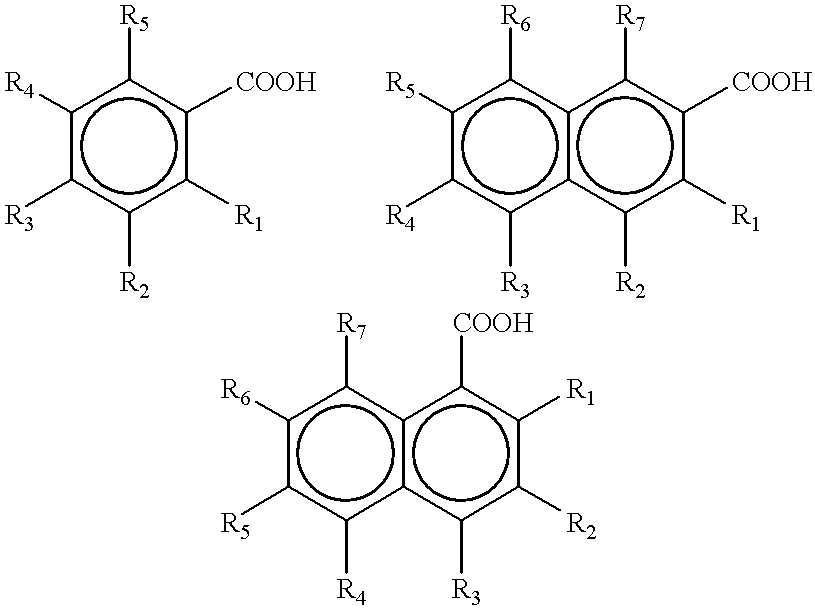However, a toner comprising such a sharp-melting binder resin is liable to cause a problem of high-temperature offset because of low self-cohesion of the binder resin at the time of toner melting in the heat-pressure fixing step.
When such a high-
crystallinity wax is used in a toner for full-
color image formation, however, the fixed toner image is liable to have inferior transparency, thus providing a projected image with lower saturation and brightness when projected as an OHP image, because of the high
crystallinity and difference in
refractive index from an OHP
sheet material of the
wax.
The toner is not satisfactory in respects of sufficient storability in a high temperature environment, performance of stably providing high-quality images in continuous formation of a large number of image products and stable chargeability and developing performance in various environments.
However, such waxes cannot fully satisfy all the requirements of transparency for OHP use, and low-temperature fixability and anti-high temperature offset characteristic at the time of heat-pressure fixation.
However, according to the measure, the
resultant fixed image is liable to have excessive oil on its surface, and the oil is liable to soil the photosensitive member by attachment and swell the fixing roller to shorten the life of the roller.
Further, the oil has to be supplied to the fixing roller surface uniformly and at a controlled rate in order to prevent the occurrence of oil lines on the fixed image, and thus tends to require an increase in overall size of the fixing apparatus.
If G'.sub.80 is below 1.times.10.sup.6 dN / m.sup.2, the toner is caused to have lower storability,
heat resistance and anti-blocking property, thus being liable to cause coalescence of toner particles and result in a massive toner
agglomerate.
On the other hand, if G'.sub.80 is higher than 1.times.10.sup.10 dN / m.sup.2, the toner may have sufficient storability,
heat resistance and anti-blocking property, but the toner fails to exhibit sufficient fixability and color mixability.
Further, in the case of being left to stand for a long period in a high temperature environment, the toner is caused to have lower storability and anti-blocking property, thus resulting in coalescence of toner particles.
If Tabs.max exceeds 110.degree. C. or Tevo.max exceeds 90.degree. C., the toner is liable to have inferior low-temperature fixability.
If the ratio (G'max / G'min) exceeds 20, the fixed images are liable to have different gloss so that it becomes difficult to stably obtain high-quality images when a large number of image products are produced.
On the other hand, if Mp exceeds 15,000, the toner is liable to have an inferior low-temperature fixability and provide lower transparency for OHP use.
D4>10 .mu.m means that a fraction of
small particles contributing to high-quality image production is small in amount, so that it becomes difficult to faithfully develop minute electrostatic images on a photosensitive drum, thus lowering the reproducibility of highlight image and lowering the resolution.
Further, an excessively large amount of toner is liable to be attached onto the electrostatic image, thus resulting in increased toner consumption.
On the other hand, if D4<4 .mu.m, the toner is liable to have an excessive charge per unit weight, so that the
image density is liable to be lowered, particularly in a low temperature / low
humidity environment.
This is particularly unsuitable for development of an image having a large
image area percentage, such as a graphic image.
Further, if D4<4 .mu.m, it becomes difficult to triboelectrically charge the toner with a contact charging member, such as a carrier, and an increased fraction of toner fails to be sufficiently charged, so that the developed image is liable to be accompanied with noticeable
fog caused by scattering to non-image parts.
In the case of a toner of D4<4 .mu.m, however, the toner is also liable to cause self-agglomeration, so that it is difficult to realize a uniform mixing with the carrier in a short time, and
fog is liable to occur in continuous
image formation performed while replenishing the toner.
On the other hand, if the toner particles of 4 .mu.m or smaller exceeds 50% by number, the toner particles are liable to
agglomerate with each other, thus functioning as massive toner particles exceeding a proper size to result in images with a rough appearance, lower resolution, and with an appearance of hollow image due to a large
density difference between edges and inside of an
image pattern.
If n is below n, the treatment is facilitated but the
resultant hydrophobicity is liable to be low.
If n larger than 12, a sufficient hydrophobicity can be attained, but the treated inorganic
fine powder is liable to cause
agglomerate, thus lowering the flowability-imparting ability.
On the other hand, if m is larger than 3, the reactivity of the alkylalkoxy
coupling agent is lowered, so that effective hydrophobization becomes difficult.
%,
fog and toner scattering in the apparatus are liable to occur.
If the application amount exceeds 1.times.10.sup.-7 g / cm.sup.2, the fixed image on the recording material is liable to
glitter, thus lowering the recognizability of character images.
 Login to View More
Login to View More  Login to View More
Login to View More 


